Request for a Calligraphy Kakejiku: Mounting a Kakejiku with a Bespoke Calligraphic Work | The U.S.
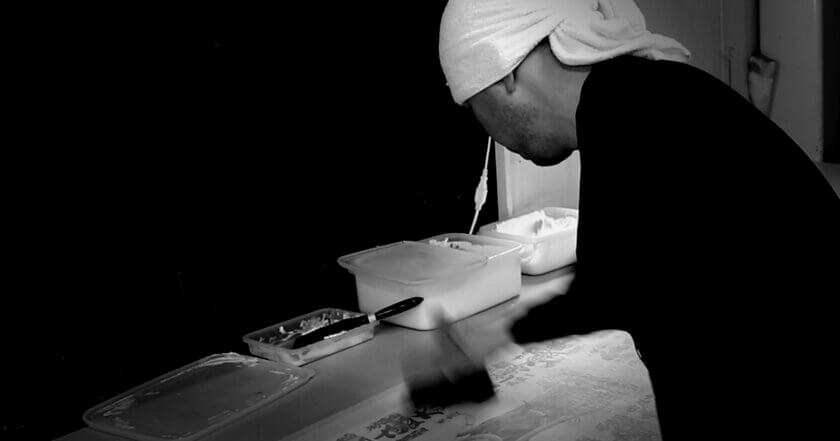
Request for a Calligraphy Kakejiku: Mounting a Kakejiku with a Bespoke Calligraphy | The U.S.
Contents
We take requests from customers across the world.
I greatly appreciate that we are now dealing with our customers in over 40 countries and it’s been such a privilege to have an exchange with people from various countries over our kakejiku.
Those foreign customers’ requests regarding kakejiku can be somewhat unique unlike usual orders from Japanese customers.
This time, I’m talking about an episode of a request: mounting a kakejiku with a twist.
Inquiry from an American Customer
The customer who placed the order is an American gentleman.
I listened to his requirement just to reveal that it’s to mount a kakejiku with a bespoke Japanese calligraphy piece.
We’ve previously mounted calligraphy kakejikus whose main work had been executed by our contract calligrapher with the customer’s taste.
The article below is an example of making the original kakejiku ordered by a Malaysian Muslim whom I know.
As the price is up to the number of the character to draw, the complexity of the content, the size of the artwork and the grade of the mounting fabric, we asked the customer about his preference to start with.
Here is the content he’d like to have it done.
彼の者は常に独り
故に、生涯に意味はなく。
That person has been alone and always will be.
Hence, life does not mean anything.
How harsh..isn’t it…
It made me curious enough: Why he wishes for a kakejiku with this gloomy content?
His motive behind the decision remains obscure. Still, I tried not to mention it because I believe that’s a private matter.
Needless to say, we are competent to have the calligraphy work done, so the advice from us for him was the fact that punctuation marks will be omitted, following the common practice of Japanese calligraphy.
The requests from the customer were to properly divide the sentence into two rows and to avoid emotionless handwriting which looks as if machine produced. Say, fonts on the PC.
Once we assured him that our contract calligrapher surely understands these points, our business arrangements, as well as the payment, were completed to kick off the work.
Completion of the Calligraphy Piece
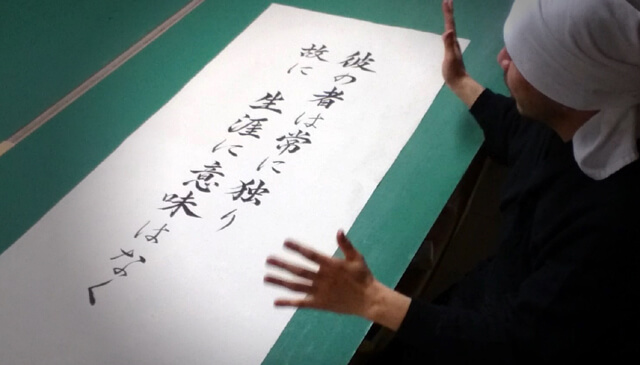
The piece we ordered has been finished by our contract calligrapher.
It was such a relief that although the script looked handsome enough to read easily, still embraced its emotion and was life-giving.
I certainly recognize that the calligrapher knows what she is doing given her past achievements. Even so, each time I place an order, it’s rather worrisome concerning ‘Was our concept taken in no problem?’ or ‘Would the finished product be what we desired?’.
The result of the piece made me convinced that it will please the American customer. Then it’s our turn and we started off with the mounting task.
Completion of the Requested Kakejiku
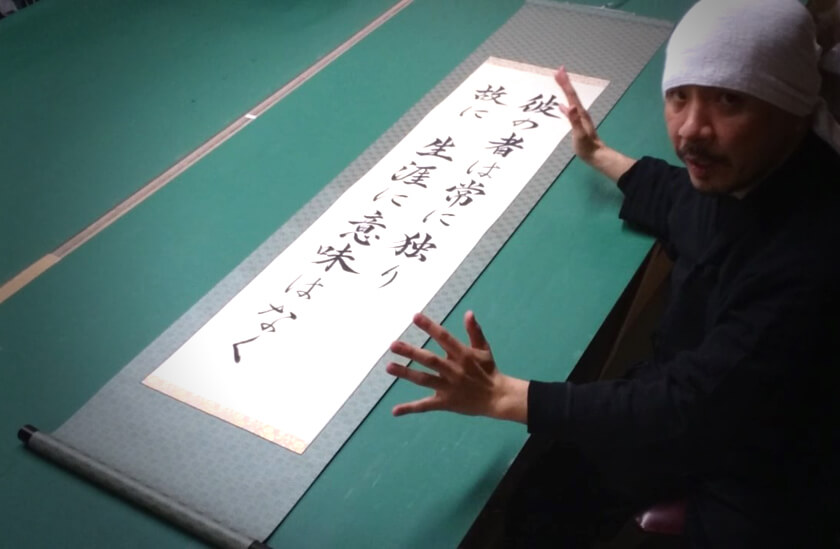
‘Kakejiku of loneliness’ is, at last, all finished. – I named it ‘Kakejiku of loneliness’ at my own discretion haha. Because of its cheerless content…
The completed piece gives, I would say, a sharp impression all in all with the effect of the subdued colored fabric.
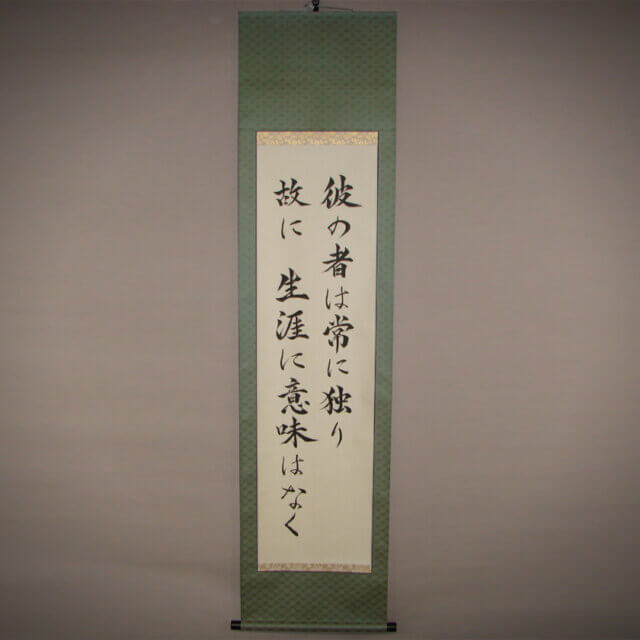
Realizing the request of the customer ‘Keep the mounting simple’, we mounted the piece with the scheme.
We informed him about the completion of his order then immediately sent the piece to the U.S.
Feedback from the Customer
If you could read the email below which shows his gratitude and also notifies the safe arrival of the kakejiku.
If you could read the email below which shows his gratitude and also notifies the safe arrival of the kakejiku.
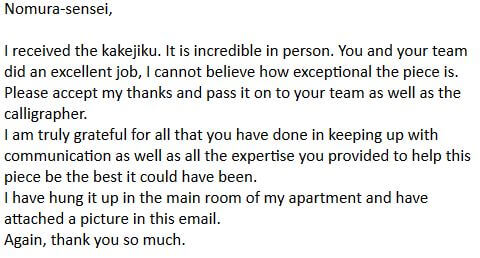
We, Team Nomura, are touched by the content of the mail conveying his deep appreciation.
Here is a picture from the customer giving us an idea about how it’s decorated in his room.
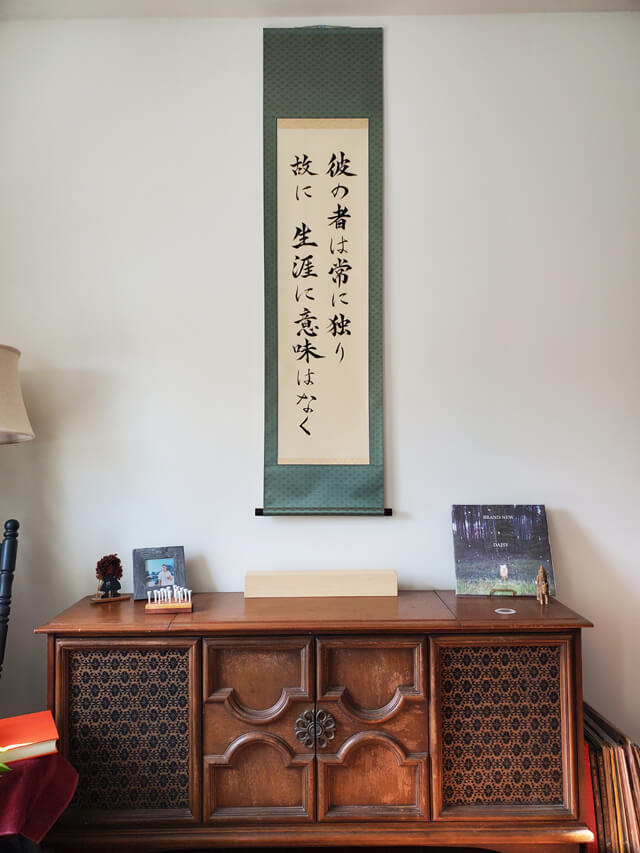
I’m very happy with the way he displays it which looks chic and is beyond my anticipation.
The kakejiku and the antique wooden furniture under the piece enhance each other tastefully.
I’m deeply thankful the customer provided us a worthwhile job, imagining his dream kakejiku created by both the calligrapher and my team now satisfying and delighting him.
As you see in this episode, we also take a request for mounting a kakejiku with a bespoke calligraphic work.
Please don’t hesitate to contact us if you have any desired kakejiku of this kind.


